Facebook Ads and Customer Acquisition Costs: two completely different concepts, both incredibly nuanced and useful. Despite being completely different, they are used hand in hand, especially amongst marketers like yourself that are not only interested in improving their lead generation efforts, but also seeking transparency in their leads reporting.
But before we jump into the details of Customer Acquisition Cost (CAC) and how it functions within Facebook Ads, it’s crucial that we understand the fundamentals of what CAC really is and what it means for you.
CAC…what is it?
Not to be confused with the Corporate Affairs Commission, CAC stands for Customer Acquisition Cost, a metric that allows companies to calculate the overall cost to acquire a customer. In order to measure CAC properly, you will need to divide the total cost of your marketing and sales efforts by the number of acquired customers.
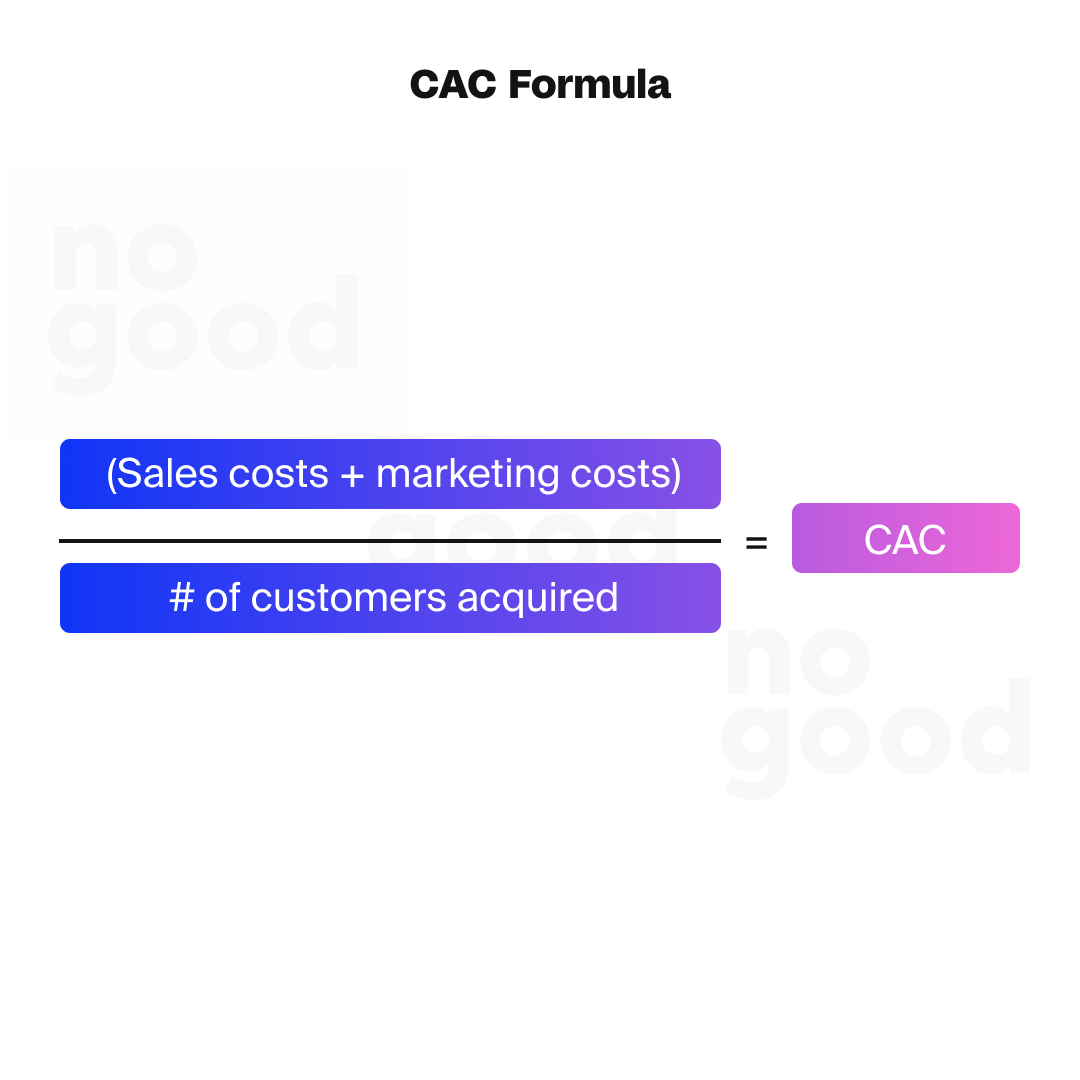
Two very close metrics to CAC are CPA and CPL which, despite being similar in measuring the cost of two key marketing metrics, CPA and CPL measure the cost of acquiring leads/prospects from marketing channels that may not be converted to paying customers yet.
CAC…why is it important?
CAC is one of the leading metrics that helps companies determine the Return on Investment (ROI) of an acquisition. At its core, CAC is an essential metric for businesses, as it helps businesses understand whether their business model is conducive to increasing profits while keeping acquisition costs low. Beyond that, CAC is a metric that can help you identify strengths and weaknesses of your businesses outside of the cost to acquire a new customer.
CAC…when to use it?
There are countless metrics to choose from when determining how you’re going to optimize your campaigns. CTR, CPC, CVR, CPL, the list goes on. It’s important to learn about the purpose of each metric and what they measure so you don’t use the wrong metric when measuring a certain KPI. For example, if you’re measuring the effectiveness of your campaign for bottom of funnel performance such as conversions and Customer Acquisition Cost, you’ll want to avoid factoring metrics like click through rate, which measures the rate at which users clicked on your ads after viewing them.
CAC is a powerful metric that can help you understand the success of your marketing and sales efforts in acquiring new customers More broadly, CAC can help you evaluate the scalability and sustainability of your growth strategies. Here are some practical, real-world examples of when CAC would be useful to your business:
Evaluating Marketing and Sales Efficiency
CAC helps determine how efficiently your marketing and sales efforts are converting potential leads into paying customers. If company A’s CAC is $10 and company B’s CAC is $50, company A is operating at an 80% cheaper level of efficiency than company B.
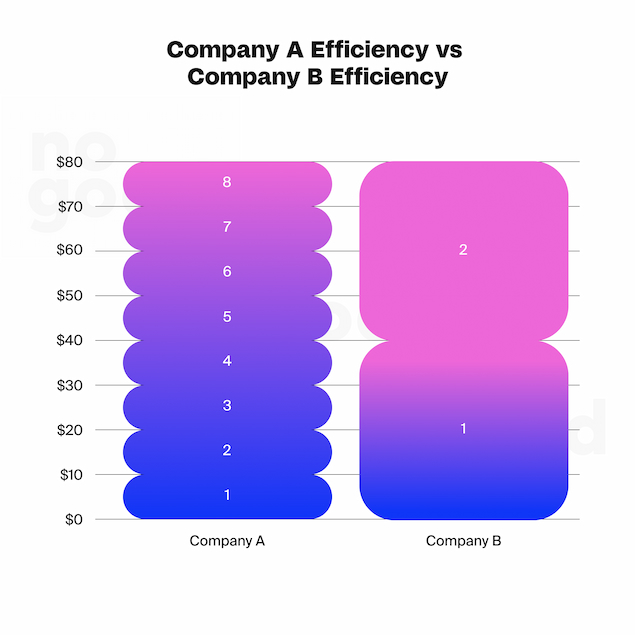
Financial Budgeting and Forecasting
Understanding CAC and its purpose helps businesses in planning their budgets more effectively. Companies can decide how much they can afford to spend on acquiring a customer while still maintaining profitability. Additionally, CAC lets businesses know if their current marketing budget and efforts are efficient at acquiring new customers. If customer acquisition costs are too high, consider reducing marketing spend or optimizing your existing campaigns (which we’ll get into later).
Pricing Strategy
CAC can inform businesses on the effectiveness of their existing pricing strategies by providing insights into how their current model’s pricing affects their acquisition costs. Knowing CAC helps businesses set prices and adjust pricing to ensure that they can remain competitive and profitable simultaneously.
Performance Tracking
There are a plethora of useful ways to leverage CAC outside of directly measuring your business’s cost to acquire a new customer. Analyzing CAC can help you identify the effect of trends such as seasonality differences, campaign changes, or customer acquisition issues on your customer acquisition efforts.
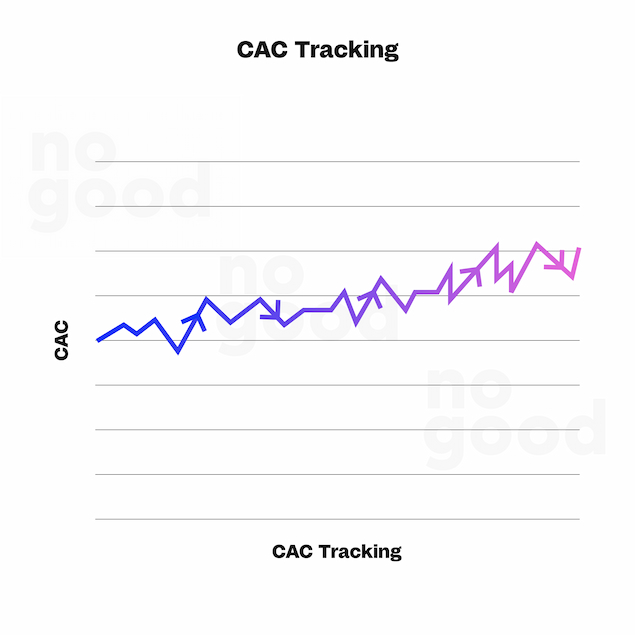
CAC and Facebook Ads
Facebook Ads is a powerful advertising tool that advertisers can leverage to help their business scale and go to market. But with great power comes great responsibility. It’s very easy for advertisers to dump $100,000 into Facebook Ads and achieve a negative return on investment, especially with the lack of visibility around attribution, audience details, and advertiser’s true return on ad spend. That’s why looping CAC into your Facebook Ads strategy can be one of the most powerful tools for seeing the honest and transparent performance of your advertising campaigns.
Why Use Facebook Ads?
After all, Facebook has been all over the news in the past decade, oftentimes without the most positive headlines to back them up. Between the Cambridge Analytica scandal of 2018, the surge of misinformation amidst the 2016 election, and the $5 billion FTC fine for violating user privacy data in 2019, you may ask yourself if advertising on Facebook is a good idea for your business. Despite the negative headlines, we highly recommend adding Facebook Ads to your existing marketing stack, and here’s why:
- Facebook currently has 3.049 billion users as of this year
- More than 200 million businesses use Facebook
- As of 2020, more than 10 million advertisers used Facebook
- Facebook is the most popular social media network in the world
- By 2027, Facebook is projected to reach 75% of the world’s population
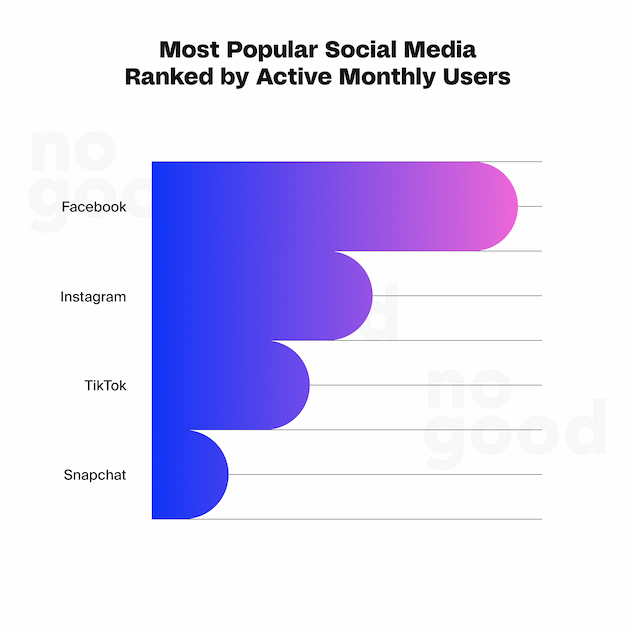
The numbers don’t lie. By avoiding advertising on Facebook, you’re missing out on a golden opportunity to reach an enormous amount of potential customers and ultimately a chance to identify new opportunities for reducing CAC.
Is Facebook Ads good for customer acquisition?
When discussing CAC, customer acquisition is at the heart of the conversation. Without a seamless way of acquiring new customers, you’ll never get to optimize your CAC. Luckily for advertisers, Facebook is one of the most robust platforms in terms of methods for reaching new audiences and millions of people, even through one campaign. In this article, we’re going to discuss two primary categories where Facebook provides a copious amount of tools for advertisers to use.
Audiences
Facebook offers a sophisticated and robust set of targeting capabilities for advertisers to get their ads in front of the right audience based on features such as demographics, interaction, position, and more. Here are the primary audience types available to advertisers, and how they can improve CAC for your business:
Core Audiences
These audiences are defined based on criteria like age, interests, geography, and more. Core audiences enable advertisers to improve CAC through the vast data available on Facebook’s platform, allowing advertisers to get their ads in front of users that wouldn’t be accessible on any other platform.
Custom Audiences
This audience type allows advertisers to reach people who have already interacted with their business, either online or offline. This could include visiting a website, engaging with a Facebook page, or using a mobile app. Custom audiences are created by uploading a customer list, capturing website visitors with the Facebook pixel, or engaging users of a mobile app. Custom audiences enable advertisers to improve CAC by engaging users who interacted with various company pages but didn’t convert to a paid customer, therefore ensuring that ad dollars aren’t wasted. When using custom audiences, to ensure that your custom audience is operating as effectively as possible, simply create your custom audience, add in an exclusionary layer of existing customers, and you’re all set.
Lookalike Audiences
Lookalike audiences enable advertisers to reach new people whose interests are similar to those of their best customers. You start with a custom audience, and Facebook then uses its algorithm to find people who have similar characteristics but are not already interacting with your business. Seeing as other platforms such as LinkedIn have sunset Lookalike audiences already, advertisers can improve CAC on Facebook by utilizing Lookalike audiences that aren’t available on other platforms.
Engagement Audiences
Target people who have previously engaged with your content across the Facebook family of apps and services. This could include interactions such as liking a post, clicking on an ad, or attending an event. Similar to custom audiences, engagement audiences can improve your CAC through re-engaging users who interacted with your ads but didn’t convert.
So…how do you optimize Facebook Ads for CAC?
At this point, you’ve probably already decided that Facebook Ads is right for your business. Congratulations! You’ve made the right choice. With that being said, now it’s time to ensure that your ads are optimized properly for improved customer acquisition costs. Here are some basic ideas to improve CAC with Facebook Ads, as well as some out of the box ideas that you might not have heard of before.
A/B Test Creative
Continuously test different elements of your ads, including images, headlines, ad copy, and call-to-action (CTA) buttons. A/B testing helps identify the most effective ad components, improving performance and reducing costs. Ensure that, when A/B testing, that you only test one variable at a time, and that your A/B test runs for at least a week. Otherwise, your results may be skewed and inconclusive.
Experiment with New Ad Types
While the previous point discusses testing new creative, this point is a bit different. While testing different creative is essential, it’s also important to test new ad types. Different ad types such as video and instant experience are typically great for reducing CAC, as ads are shown to users for a much cheaper cost for those ad types. Avoid limiting yourself to testing 1-2 ad types in your account, as testing different ad types can provide a deep level of insight into your audience’s preference for receiving ads, ultimately reducing CAC.
Improve Audience Targeting
Always approach CAC optimization in Facebook with a full-funnel mindset. From what ads users see to the landing page experience they receive, it’s important to consider each step of the user journey when optimizing CAC. In this case, consider refining your audience targeting by excluding any irrelevant audience details or attributes. Additionally, you can A/B test your audiences by running different audience attributes in two separate campaigns. For example, leveraging interest targeting in one audience, and job title targeting in another.
Test Different Placements
Unlike other platforms, Facebook gives you more control over where your ads are seen. There are several placements available, ranging from in-stream to story placements. Testing the placements of your ads against each other will help give you insight into where your ads perform best, and where your audience typically hangs out.
Connect your CRM
Without visibility into your lead statuses, there’s no way that you’ll know if your leads have converted to paying customers. Without knowing if your leads are converting to paid customers, there’s no way to optimize your Facebook campaigns for CAC. That’s why it’s important for you to connect your Facebook account to a CRM like HubSpot or Salesforce to track the progress of your Facebook leads through your lead nurture process. For example, if campaign A has 50 leads but only 2 have converted to closed/won, and campaign B has 25 leads and 10 have converted to closed/won, then campaign B is the better-performing campaign and you should give more budget to this campaign to optimize for a lower CAC.
Incorporate User-Generated Content (UGC)
Previously we spoke about testing different creative types, and specifically didn’t mention UGC. UGC is known to significantly increase trust and conversion rates, as the nature of the content comes from a human, rather than a company or AI. When utilizing UGC, leverage content created by your customers, such as reviews or product images. UGC is known to improve CAC through bolstering a trustworthy and relatable feeling amongst viewers of UGC content.
Utilize Conditional Questions
There’s nothing advertisers despise more than spam. It minimizes quality rate, leaves a bad taste in your client’s mouths, and most importantly, drives up CAC, as your spend is consistently going to disqualified, spammy leads. While it’s important to maintain a full-funnel mindset when approaching these issues, one area you can look towards for reducing CAC in Facebook Ads is your landing page. Specifically, implementing conditional questions that weed out disqualified traffic that answer certain questions incorrectly.
For example, you could ask a question such as “To confirm that you are not spam, please answer this question: what is 5×5?”. Questions like these not only help to weed out spam, but they provide friction within your lead form/landing page that may incentivize spammy traffic to navigate away. Additionally, adding multiple conditional questions to your lead form/landing page will help increase quality rate, resulting in a decreased CAC. You can find an example of a lead form/landing page that contains conditional questions below.
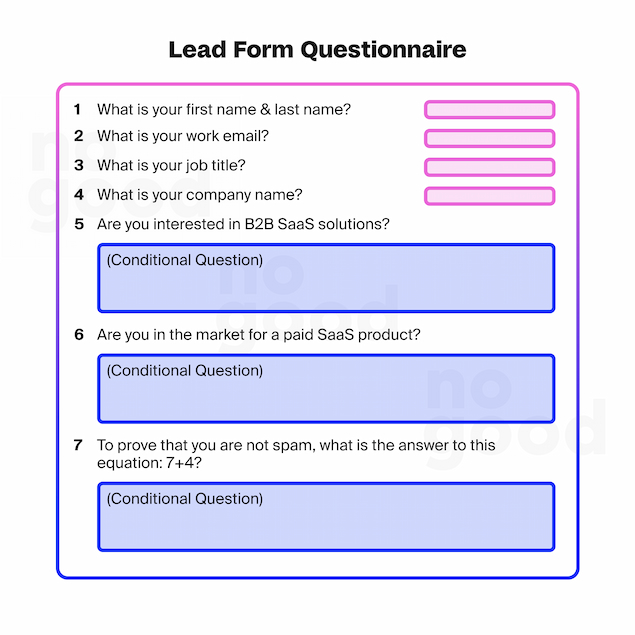
Final Thoughts
Optimizing Facebook ads for Customer Acquisition Cost (CAC) is a critical strategy for businesses aiming to enhance their digital advertising ROI and ensure sustainable growth. This process improves cost efficiency by allowing businesses to acquire more customers without increasing their advertising spend, or by reducing their overall spend without sacrificing growth. A lower CAC directly boosts profitability, as it decreases the cost associated with acquiring a new customer, thereby increasing the customer’s lifetime value (LTV) and contributing to a healthier financial outlook.
In competitive markets, the ability to acquire customers more cost-effectively provides a significant competitive advantage, enabling businesses to reinvest savings into acquiring more customers or other areas of operation, thus fostering a cycle of growth. Scalability is another crucial benefit of optimizing CAC, as it allows businesses to expand their customer base without a corresponding increase in marketing costs.
Furthermore, the process of optimizing for CAC often leads to improvements in ad targeting, creatives, and overall user experience, which leads to better engagement for your ads. Adopting a focus on lowering CAC encourages a data-driven marketing approach, allowing businesses to make more informed decisions based on analytical insights. This not only reduces costs but also improves customer satisfaction and retention rates by ensuring ads are more relevant and engaging.
Happy customers are more likely to become repeat buyers and brand advocates, further contributing to a company’s success. In essence, optimizing Facebook ads for CAC is not merely about cutting costs; it’s about implementing a more efficient, effective, and profitable marketing strategy that supports long-term, exponential growth and competitiveness in the digital landscape.




